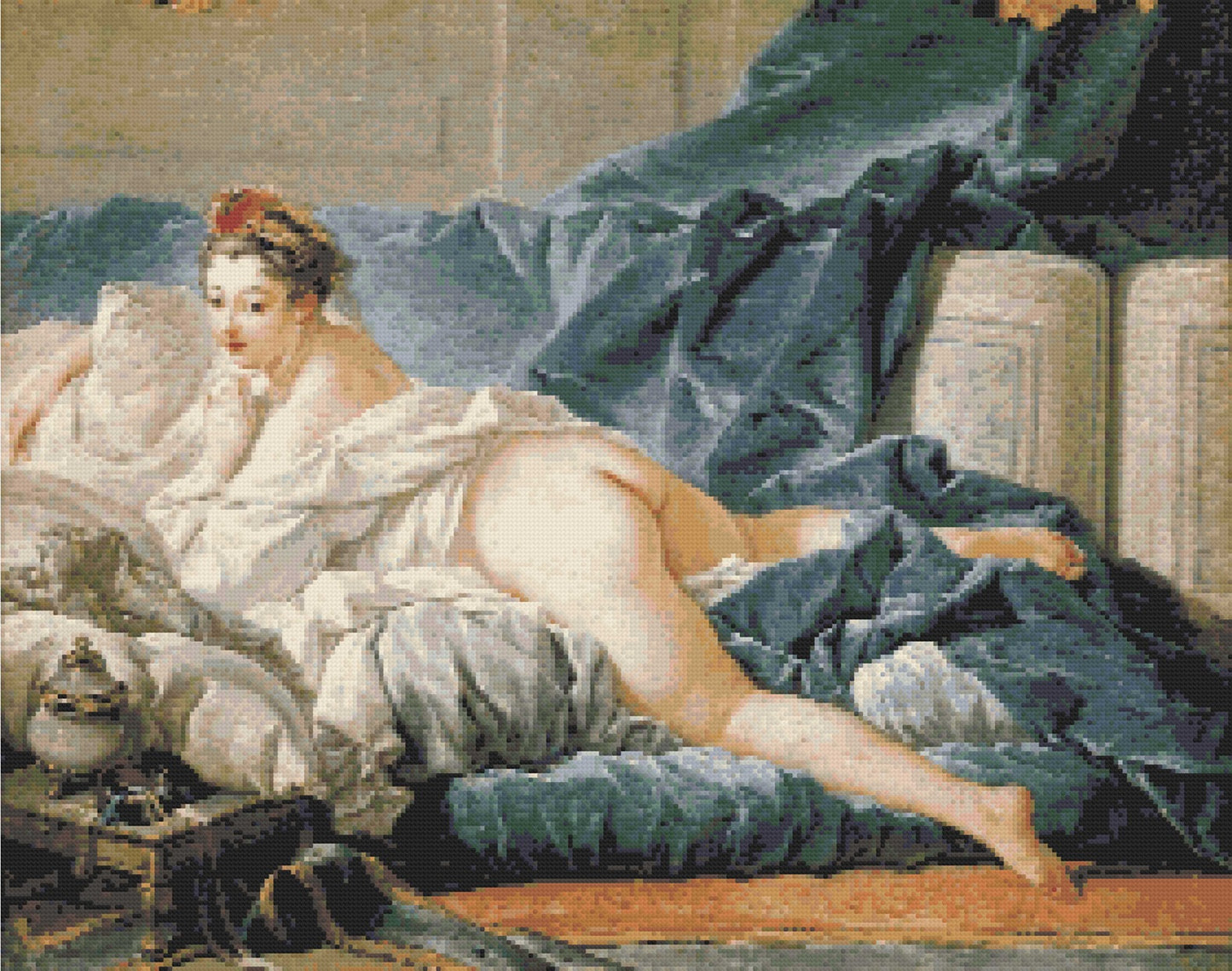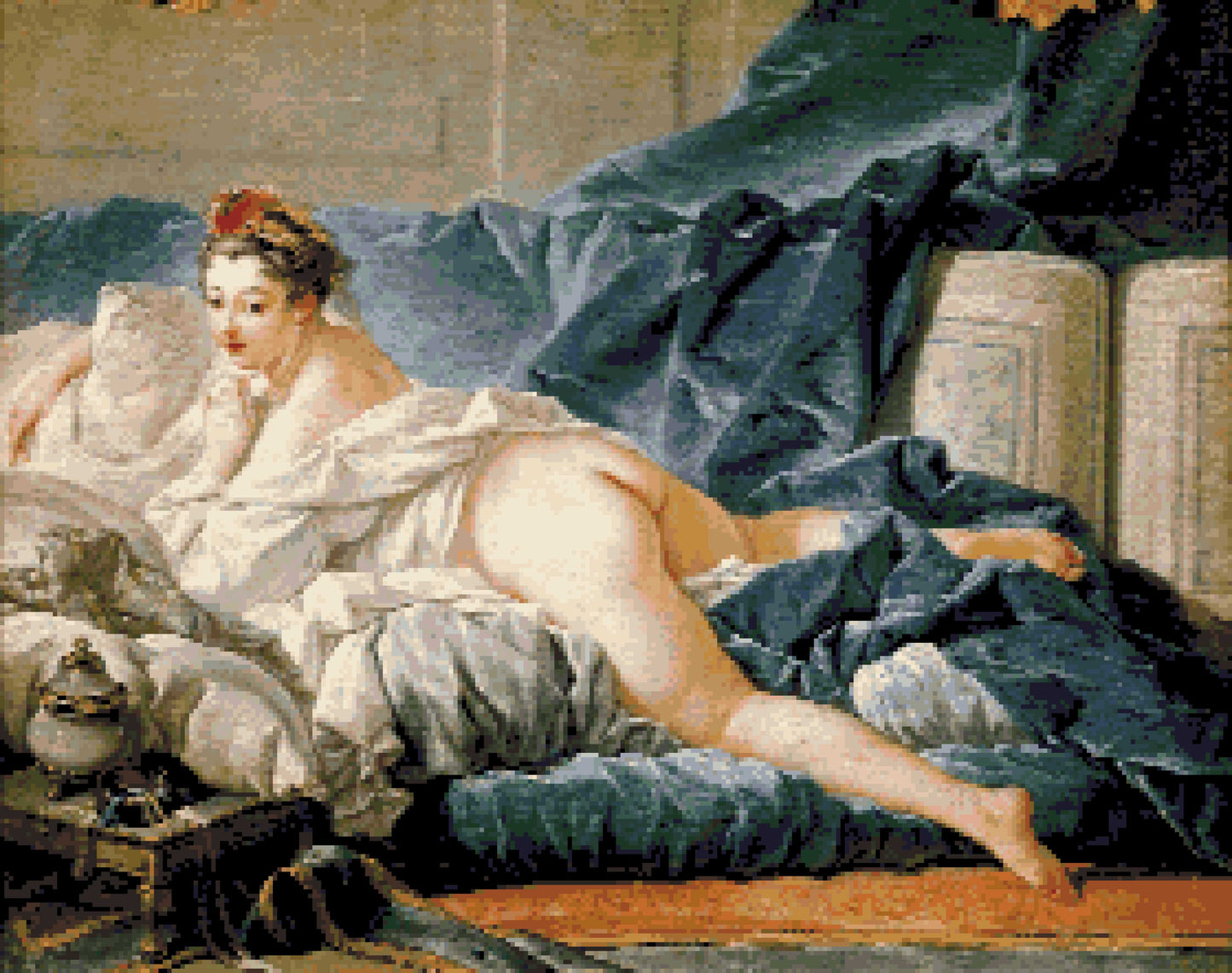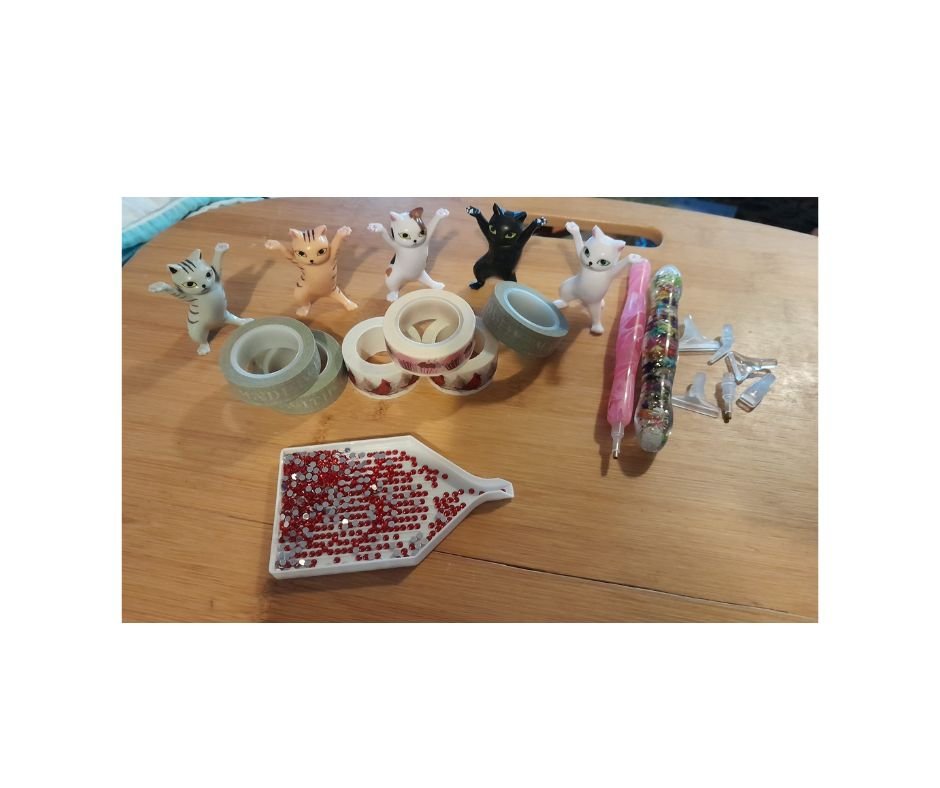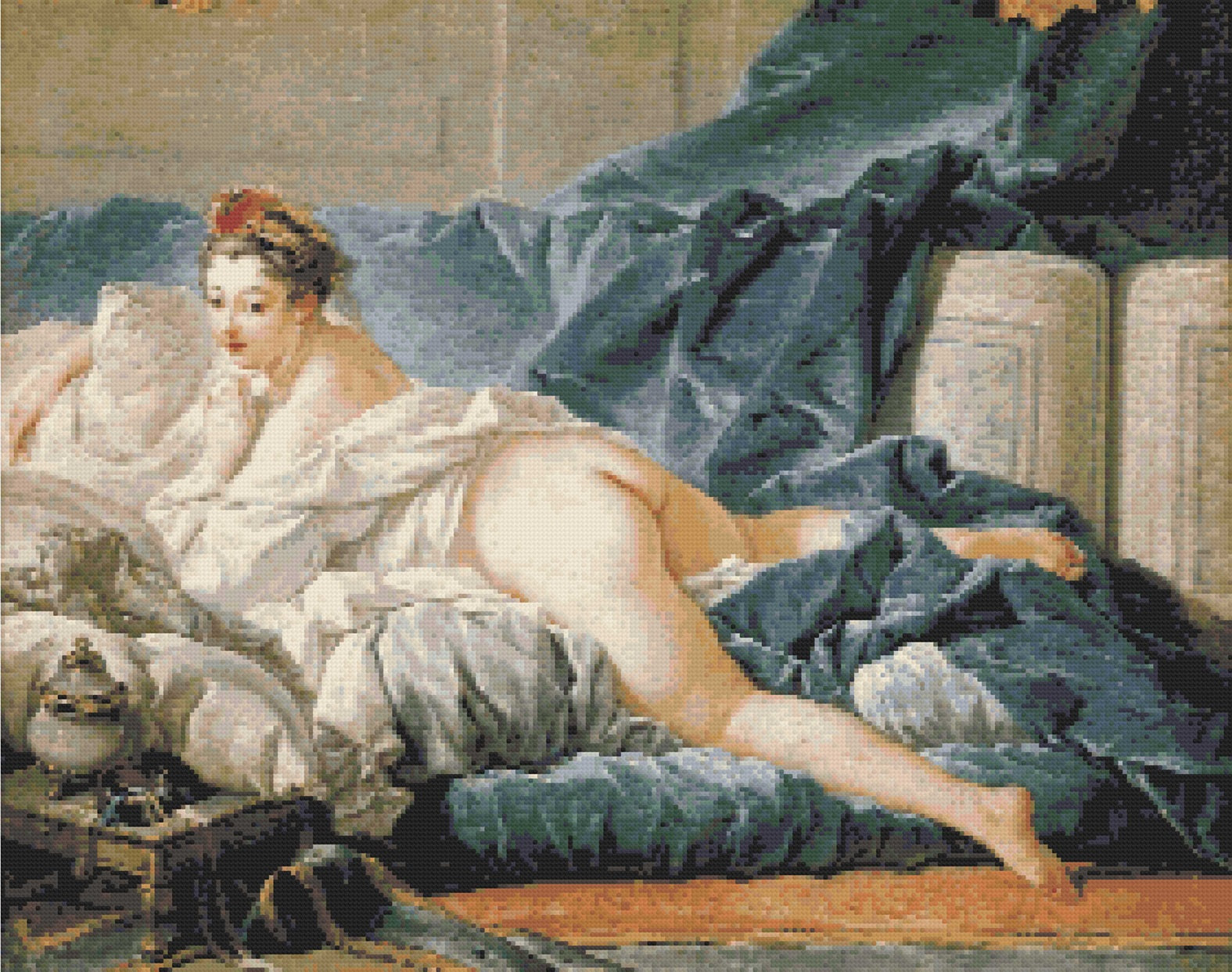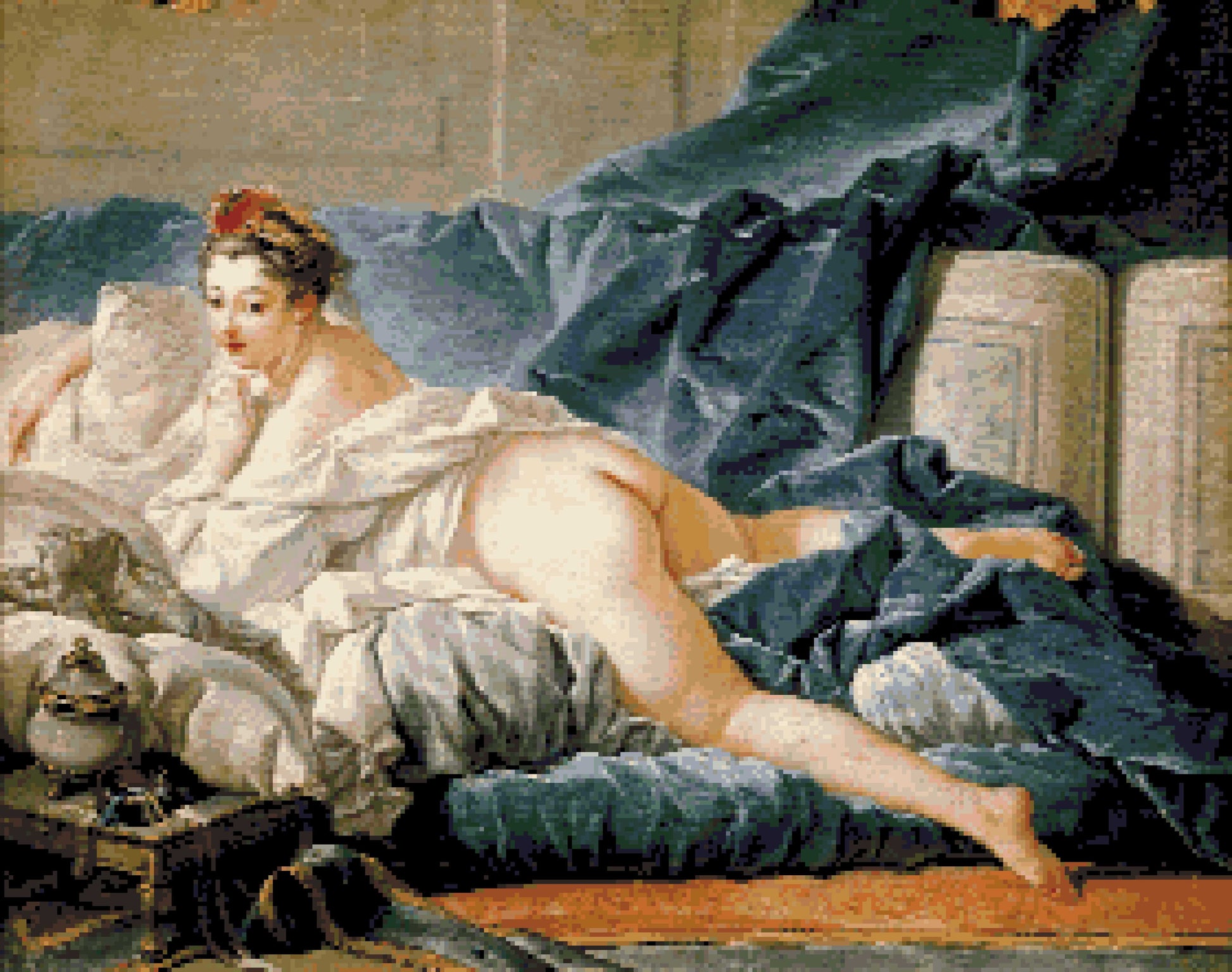A Homespun Hobby
Old Masters Diamond Painting Kit The Brunette Odalisque by François Boucher (1745)
Old Masters Diamond Painting Kit The Brunette Odalisque by François Boucher (1745)
Couldn't load pickup availability
Old Masters Diamond Art Kit The Brunette Odalisque by François Boucher (1745)
An odalisque, (ow-duh-leesk) originating from the Ottoman Turkish term 'odalık', denoted a chambermaid or female attendant within the Turkish seraglio, (sr-al-yow) particularly among the court ladies in the Ottoman sultan's household. In the context of western Europe, it evolved to signify a harem concubine, encapsulating an eroticized artistic genre where women are often depicted nude or partially clothed in reclining poses, frequently within harem settings. This concept captivated the fascination of Orientalism, notably in Great Britain and France.
The English and French term 'odalisque', occasionally 'odalique', stems from the Turkish word 'oda', meaning "chamber", thus originally denoting a chamber girl or attendant. Over time, in western contexts, it narrowed to specifically denote a harem concubine. By the eighteenth century, 'odalisque' referred to the eroticized artistic genre featuring an ostensibly eastern woman reclining for the viewer's gaze.
Originating as the Turkish 'odalık', an odalik served as a maid within the harem, potentially rising to become a concubine. Positioned at the lowest rung of the harem's social hierarchy, she attended to the needs of the sultan's concubines and wives as a personal chambermaid. Typically bestowed as gifts to the sultan by affluent Turkish men, odaliks remained under the direct oversight of the Valide sultan, the sultan's mother, and were rarely seen by the sultan himself.
If an odalik possessed exceptional beauty or talents in dancing or singing, she might undergo training as a potential concubine. Upon selection, a former odalik trained as a court lady would serve the sultan sexually, thereby elevating her status to one of the sultan's consorts following such intimate contact.
This painting can be viewed at the Louvre in Paris, France
Original details:
- Oil on canvas
- 21 x 25 inches
Your Masterpiece:
- Full drill, round
- 32 x 26 inches
- 63 drill colors
- Poured glue
- Artist Canvas
Skill level: Expert

This painting is in the public domain because the author died on 30 May 1770 (aged 66) in Paris, France.
The author died in 1770 so this work is in the public domain it its country of origin and other countries and areas where the copyright term is the author's life, plus 100 years or fewer.
This work is in the public domain in the Unites States because it was published or registered with the US Copyright Office before January 1, 1929.
This photographic reproduction is therefore also considered to be in the public domain in the United States.
Share
